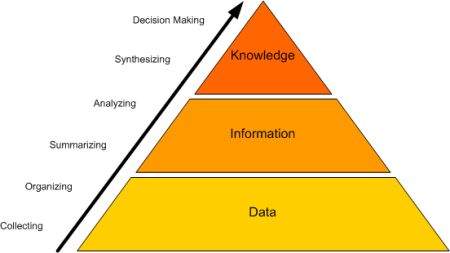Knowledge Processing Basics
Introduction
Knowledge management is an activity practiced by enterprises all over the world. In the process of knowledge management, these enterprises comprehensively gather information using many methods and tools. Then, the gathered information is organized, stored, shared, and analyzed using defined techniques.
The analysis of such information will be based on resources, documents, people, and their skills. Properly analyzed information will then be stored as ‘knowledge’ of the enterprise. This knowledge is later used for activities such as organizational decision-making and training new staff members. There have been many approaches to knowledge management from the early days. Most of the early approaches have been manual storing and analysis of information. With the introduction of computers, most organizational knowledge and management processes have been automated. Therefore, information storing, retrieval, and sharing have become convenient. Nowadays, most enterprises have their knowledge management framework in place. The framework defines the knowledge gathering points, gathering techniques, tools used, data storing tools and techniques, and analyzing mechanism.
The Knowledge Management Process
The process of knowledge management is universal for any enterprise. Sometimes, the resources used, such as tools and techniques, can be unique to the organizational environment. The Knowledge Management process has six basic steps assisted by different tools and techniques. When these steps are followed sequentially, the data transform into knowledge.

Step 1: Collecting
This is the most important step of the knowledge management process. If you collect the incorrect or irrelevant data, the resulting knowledge may not be the most accurate. Therefore, the decisions made based on such knowledge could be inaccurate as well.
There are many methods and tools used for data collection. First of all, data collection should be a procedure in knowledge management process. These procedures should be properly documented and followed by people involved in data collection process. The data collection procedure defines certain data collection points. Some points may be the summary of certain routine reports. As an example, monthly sales report and daily attendance reports may be two good resources for data collection.
With data collection points, the data extraction techniques and tools are also defined. As an example, the sales report may be a paper-based report where a data entry operator needs to feed the data manually to a database whereas, the daily attendance report may be an online report where it is directly stored in the database. In addition to data collecting points and extraction mechanism, data storage is also defined in this step. Most of the organizations now use a software database application for this purpose.
Step 2: Organizing
The data collected need to be organized. This organization usually happens based on certain rules. These rules are defined by the organization. As an example, all sales-related data can be filed together and all staff-related data could be stored in the same database table. This type of organization helps to maintain data accurately within a database. If there is much data in the database, techniques such as ‘normalization’ can be used for organizing and reducing the duplication. This way, data is logically arranged and related to one another for easy retrieval. When data passes step 2, it becomes information.
Step 3: Summarizing
In this step, the information is summarized in order to take the essence of it. The lengthy information is presented in tabular or graphical format and stored appropriately. For summarizing, there are many tools that can be used such as software packages, charts (Pareto, cause-and-effect), and different techniques.
Step 4: Analyzing
At this stage, the information is analyzed in order to find the relationships, redundancies and patterns. An expert or an expert team should be assigned for this purpose as the experience of the person/team plays a vital role. Usually, there are reports created after analysis of information.
Step 5: Synthesizing
At this point, information becomes knowledge. The results of analysis (usually the reports) are combined together to derive various concepts and artefacts. A pattern or behavior of one entity can be applied to explain another, and collectively, the organization will have a set of knowledge elements that can be used across the organization. This knowledge is then stored in the organizational knowledge base for further use.
Usually, the knowledge base is a software implementation that can be accessed from anywhere through the Internet. You can also buy such knowledge base software or download an open-source implementation of the same for free.
Step 6: Decision Making
At this stage, the knowledge is used for decision making. As an example, when estimating a specific type of a project or a task, the knowledge related to previous estimates can be used. This accelerates the estimation process and adds high accuracy. This is how the organizational knowledge management adds value and saves money in the long run.
Conclusion
Knowledge management is an essential practice for enterprise organizations. Organizational knowledge adds long-term benefits to the organization in terms of finances, culture and people. Therefore, all mature organizations should take necessary steps for knowledge management in order to enhance the business operations and organization’s overall capability.